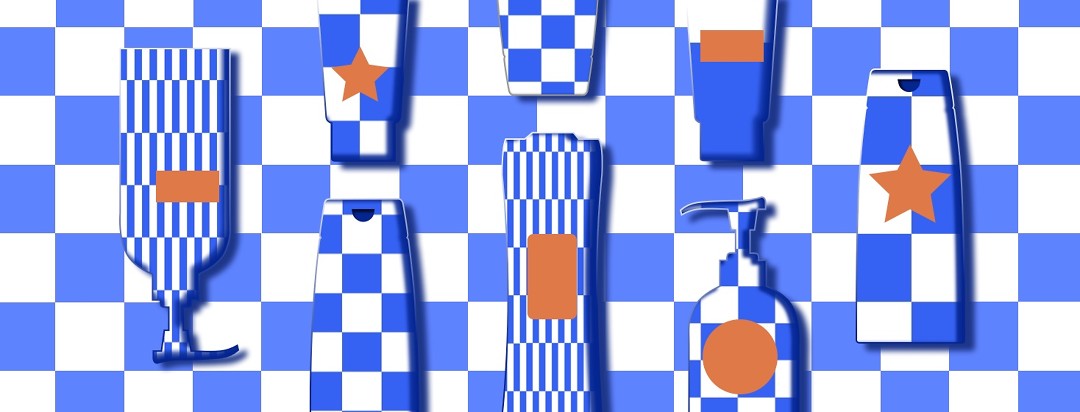What's Blue and White and Crammed Into My Drawer? (Lots of Creams)
This is probably not a question that occurs to many people unless those people have a drawer full of prescription meds for their skin. That said, I am wondering why many drug manufacturers choose blue and white for their packaging. Maybe the bright clean look? I don’t know, but I know that it can be confusing, especially if you’re in a hurry when you are reaching for a cream.
Why do all skin cancer creams look the same?
The packaging for these creams and ointments is all blue and white:
- Calcipotriene cream
- Fluorouracil cream
- Nystatin cream
- Hydrocortisone 2.5% cream
- Mupirocin ointment, 2%
Only the hydrocortisone is a little different, because, drum roll, it has a red line under the blue in the packaging. The package for Tretinoin cream, a form of vitamin A that helps the skin renew itself, is the only one that is totally different: It is orange and white.1
This drawer is full of everything!
That drawer in my bathroom is a mess. First of all, I don’t always put the caps back on, so cream or ointment tend to ooze. In addition, crammed into the drawer are two tubes of over-the-counter bacitracin, a Neutrogena Sheer Zinc face dry-touch, a Neutrogena hand cream – all of which I can use – and an expensive tinted sunscreen, from Sephora, that I don’t think I can use. That’s because it is one of the old kinds that does not contain zinc. You would think I might just throw it out but I am still mulling over whether it’s okay to use.
A few creams for one problem
I know what all but one of those creams in the blue and white tubes and boxes are for. I’m going to have to look up the Mupirocin. It’s from this March and isn’t even that old!...Now I’m remembering that it’s an antibiotic that my internist prescribed for redness at the corners of my mouth and peeling skin on my bottom lip.
But a dermatologist who looked at it afterward said to use hydrocortisone. So that takes care of the hydrocortisone cream. It comes in handy for other problems, though, such as the itch from the bug bites I got around my neck while gardening.
Since we’re going from the bottom up, now let’s investigate the Nystatin. It is an antifungal used to treat skin infections caused by yeast. It is not supposed to be used for vaginal yeast infections, though. I think I got that for a different kind of irritation on the sides of my mouth. It is a more bubbly-looking irritation, as opposed to the flat red that calls for the hydrocortisone. With three creams and ointments for one area of my face, I think that the next time I have a problem there, I better call or email the doctor.
Creams for actinic keratoses
The fluorouracil (5-FU) and calcipotriene (also called calcipotriol) are there because I use them in combination to treat actinic keratoses. My doctors are encouraged by studies showing the combination treatment reduces the risk of squamous cell carcinomas.2
Also, you can do the combination for a shorter period of time than the old standby, fluorouracil (Efudex), that we all know and love, or more accurately, love to hate.
Always double check your creams
If you, like me, have an over-abundance of lotions and potions, it pays to look carefully before you put something on, and, if not sure, get in touch with your doctor. You don’t want to make a mistake like the pharmacist who gave Efudex to a woman who had been prescribed hydrocortisone for hemorrhoids. Michael Cohen, president of the Institute for Safe Medication Practices, told me about the incident when I interviewed him for a story about the side effects of Efudex. His organization, which operates the National Medication Errors Reporting Program, got the report about the woman. “She applied it to her hemorrhoids, and they started to bleed and it made her life miserable,” Cohen said.3 Ouch.

Join the conversation